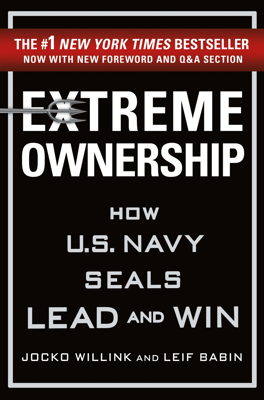Decentralized Command
Introduction to Decentralized Command
In the high-stakes environment of Ramadi, Iraq, Jocko Willink stresses the necessity of Decentralized Command. This command structure allows frontline leaders to make critical decisions independently, backed by the trust and empowerment given by higher command. This method proved pivotal in managing the complex operational dynamics and ensuring effective leadership across the unit.
Battlefield Application: Challenges and Observations
Willink elaborates on several battlefield scenarios where Decentralized Command was essential. With diverse units navigating the chaotic urban warfare environment, no single leader could oversee all tactical details effectively. Leaders, therefore, empowered their subordinates, who had clear understandings of the overarching mission (referred to as the Commander’s Intent), to make decisions. This approach ensured streamlined operations even amid high-stress combat situations.
Learning and Implementing Decentralized Command
The principle of Decentralized Command was honed through rigorous training and real-world application. During urban combat training in Fort Knox, Willink’s unit practiced this principle under difficult conditions, learning to trust junior leaders to manage sections of the team independently. These preparations were critical in ensuring that Decentralized Command could be executed effectively in actual combat.
Key Attributes of Decentralized Command
Decentralized Command hinges on several key attributes: - Trust and Confidence: Senior leaders must trust that junior leaders will make appropriate decisions and junior leaders must have confidence that their decisions are backed by their superiors. - Understanding the Mission: Junior leaders must fully grasp the strategic objectives to ensure their tactical decisions align with desired outcomes. - Effective Communication: Continuous, clear communication is vital in maintaining situational awareness throughout the chain of command.
Incident Illustration: Avoiding Friendly Fire
A significant example presented is an incident where potential friendly fire on U.S. SEAL teams was avoided due to effective Decentralized Command. Through careful verification and communication, coupled with empowered decision-making by frontline leaders, a catastrophic mistake was prevented, showcasing the importance and effectiveness of this command strategy in tense situations.
Application to Business
Transitioning to a corporate setting, Willink discusses the application of Decentralized Command with a regional president of an investment advisory group. By reviewing the organizational structure and emphasizing the importance of clear, empowered leadership at all levels, he stresses the necessity for a well-defined chain of command and the empowerment of junior leaders to make decisions within set parameters. This approach is critical not only in military operations but also in business environments where rapid, effective decision-making is required for success.
Conclusion and Implementation
Effective Decentralized Command enables both military units and corporate teams to operate more efficiently and respond more swiftly to challenges. By establishing clear guidelines, building trust, and ensuring leaders at all levels are empowered and informed, organizations can foster a dynamic and responsive operational environment. Willink's experiences in combat and training underscore the universal applicability and critical importance of Decentralized Command in achieving strategic objectives and operational success.
